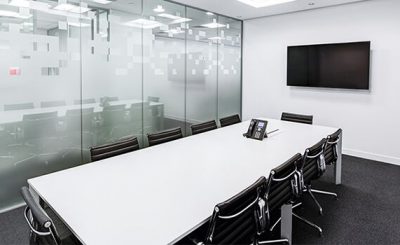If you listen carefully, you can hear the echoes of conversation around the future of Remote Work…or maybe you’re actually having one of those conversations now with a coworker or significant other. Either way, it’s a popular topic amongst the water cooler…er, kitchen sink…and it’s not as cut and dry as one may think.
There is a full spectrum of opinions on whether Remote Work is here to stay for the long term, and what working for companies will look like, in general, moving forward over the next few years. Whether you are a fan of working remotely, or heading back into a corporate office space full time (or more than likely, somewhere in between), there are a lot of things to consider.
There are many positives to continuing to work from home on a permanent basis. For one, many people are finding it’s their utopia: they can still get paid while wearing pajamas and taking a five minute break to roll around on the floor with their dog.
For many introverts, working from home is something they more than likely have wanted to do for a while, and now have the opportunity to prove to their employers they can do it, and do it well. Without having to worry about small talk at the coffee machine, if their CEO sees them at their desk at 8:30 a.m., or the variety of sounds from coworkers and their surrounding cubicles, working from home can take away some of the social stressors that really drain individuals who have a limited amount of energy to share with others. This can still be ideal for extroverts and more outgoing introverts who choose to work from a coffee shop instead of a home office.
Working remotely is starting to change its appearance, with people even working from parks, local work sharing spaces in their communities, or even while they travel the country in a camper van. This flexibility is what younger workers are really after, and oftentimes consider this benefit as a “deal breaker” if not offered by a company when reviewing for employment.
Many CEOs and their Human Resources departments consider this, but also look at other factors when trying to decide how to offer remote work options. There has been a mixed bag of results when it comes down to worker productivity in remote settings. While some thrive, others do not. There are simply either too many interruptions throughout their day, or they can’t focus through other issues that distract in the remote working environment.
Some workers really need accountability that they receive from face to face meetings, and interactions with others throughout the day. There’s nothing like a coworker stopping by your desk to inquire about the report they requested earlier in the morning to really light a fire under you to get it done!
There is also the consideration of office space leases and if contracts can be amended or terminated, and the additional hardware (or software, or licensing) requirements that may require upfront cost over the next few years that weren’t planned for the last time an investment was made with the IT department.
Also, there are just some jobs that cannot be remote. Technical companies with servers in the office need an infrastructure position to ensure those are running at all times. Clearly, many considerations must be thought of before deciding if a completely remote staff is right for any company.
With that being said, many companies may find harmony with a blended approach of allowing workers to continue in their remote environments. It may be that the individuals that prefer to never step foot in the office again would be willing to do so if it only meant commuting in two or three days per week. Likely, the workers who preferred to be in the office and liked the structure of regular working hours would have the option to continue to come in more frequently.
Meetings could still be held both with online platforms, and in person. People may find their time used more efficiently if others know their physical presence is not guaranteed throughout the whole week, and can push for more valuable interactions when at their work desk.
Companies could still scale down their square footage under this model, and look into government tax incentives and rebates for being more energy efficient in the decrease of water, electricity, and fuel that is consumed to get workers in the building and keeping them comfortable.
With so much to think about, this should not be a knee-jerk decision made hastily over the next few months. It would be understandable for companies to spend a decent amount of time digesting data, and more importantly, their employee feedback with what they prefer, and give the actual players in their game a voice for the structure they see as the most beneficial.
We have no doubt a strategy can be implemented that fits your business the best.





